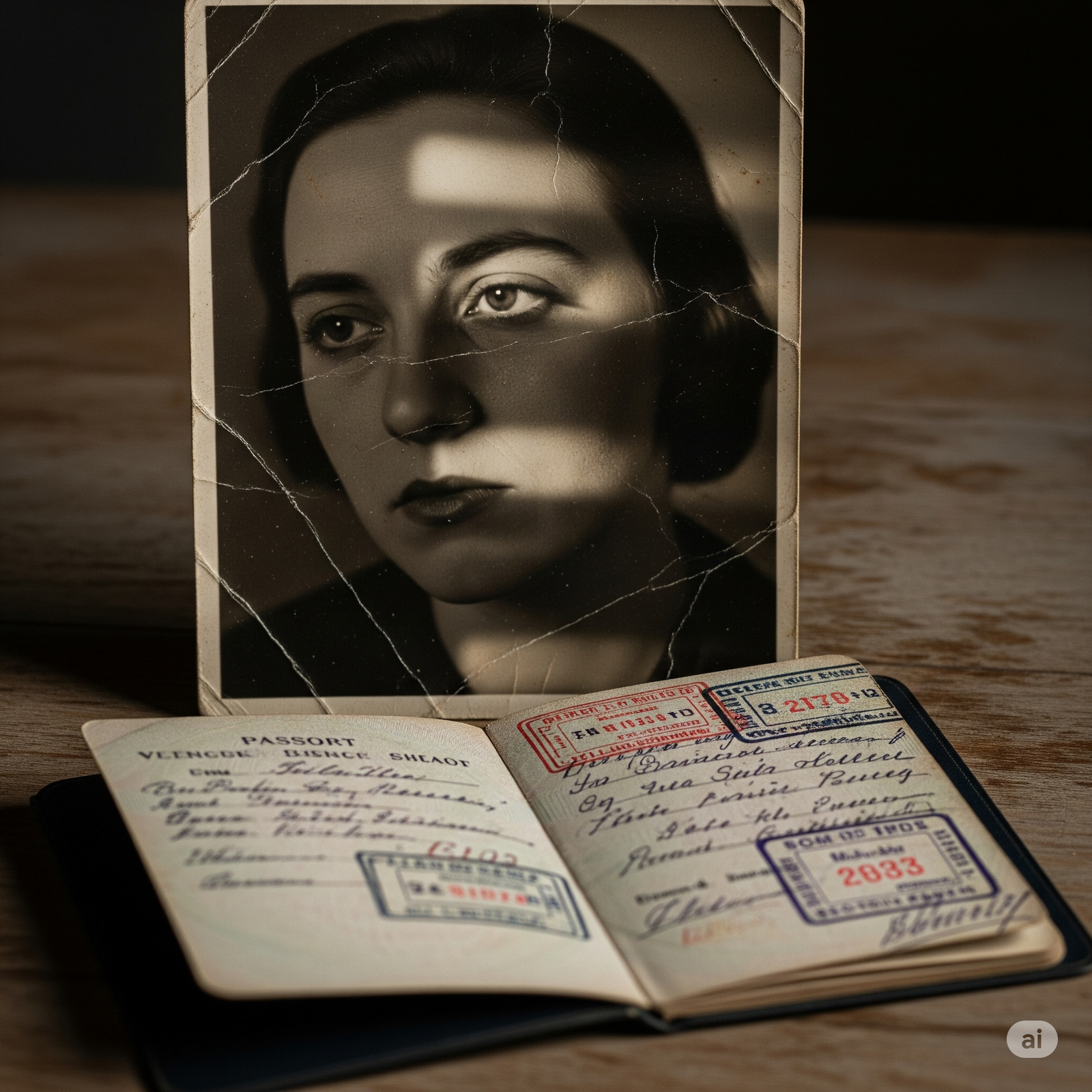Imagine this: you’re married to someone you love, you live together, you build a family, and you think you know everything about them. But then one day, they die, and while going through their things, you stumble on a box. Inside the box, you find documents that don’t just change what you thought you knew about them—they erase it completely.
This isn’t the plot of a thriller. This happened.
The woman was known as Lori Erica Ruff. She was a wife, a mother, a neighbor. But when she died in 2010, her secret came out: she had spent her entire adult life living under a stolen identity.
And to this day, parts of her story remain a mystery.
This is the strange, dark, and mysterious story of The Woman Who Was No One.
A Woman With Secrets
When people described Lori, they used words like “quiet,” “distant,” and “private.” She married a man named Blake Ruff, a church-going guy from Texas. Blake’s family was large and well-connected in their small town. They welcomed Lori, but they noticed things about her.
She didn’t talk much about her past. She claimed to be from Arizona, but she never introduced her family or childhood friends. At gatherings, she often seemed nervous or guarded.
Still, Blake loved her. The two married in 2004. A few years later, they had a daughter. From the outside, they looked like a typical young family.
But beneath that picture, Lori was hiding something enormous.
Cracks in the Marriage
By the late 2000s, the marriage was struggling. Lori’s secrecy grew heavier. She refused to share details about her life before Blake. She was controlling about their daughter, often keeping her away from Blake’s family. She withdrew from social gatherings and became increasingly paranoid.
The pressure mounted until Blake filed for divorce in 2010. Lori did not take it well. She spiraled into despair.
And on Christmas Eve 2010, Lori parked her car outside her in-laws’ home in East Texas. Inside the car, she took her own life.
She left behind her young daughter, her husband, and a grieving family. But she also left behind something else—a mystery that would consume investigators for years.
The Lockbox
After Lori’s death, Blake and his family began sorting through her belongings. In the back of a closet, they found a heavy metal lockbox. It was secured, and at first, no one thought much of it. But when they pried it open, what they discovered sent chills down their spines.
Inside were documents—old, official papers that didn’t make sense.
There was a birth certificate for a girl named Becky Sue Turner, born in 1969 in Washington State. But records showed Becky Sue had died in a house fire when she was just two years old. That identity should have ended there.
And yet, here was a certificate, along with legal documents, showing that “Becky Sue Turner” had applied for a Social Security number in 1988. That Social Security number later became the foundation for a brand new identity: Lori Erica Kennedy.
And from that moment forward, “Lori” had lived her entire adult life as someone else.
Who Was Lori, Really?
The discovery sent shockwaves through Blake’s family. Who had Lori been before she became “Lori Kennedy”? Where had she come from? Why had she stolen the identity of a dead child?
Police were called in. The FBI even got involved. Investigators pored over the documents, traced the Social Security records, and tried to piece together the puzzle.
Here’s what they uncovered:
In May of 1988, someone walked into a Social Security office in Idaho, using the birth certificate of little Becky Sue Turner, and applied for a Social Security number. That number was granted.
Later that year, using that new Social Security identity, “Becky Sue” legally changed her name to Lori Erica Kennedy in Dallas, Texas.
From then on, she built an entirely new life. She enrolled in college, earned a degree, and eventually met Blake.
It was as if Lori had pressed reset on her life in 1988. Before then, she didn’t exist.
The Leads
The FBI tried to trace Lori’s life backwards. Who was she before 1988? Where had she come from?
For years, the trail went cold. There were no fingerprints in any databases. No criminal record. No family looking for her. She had erased her past so thoroughly that she might as well have been a ghost.
But then, investigators started examining smaller clues.
For one, Lori’s behavior. Friends and family remembered how awkward she was socially, how she often avoided eye contact, and how fiercely she guarded her privacy. At times, she seemed paranoid, as if she feared someone might come after her.
Then there was the timing. In 1988, she was likely in her late teens or early twenties. Something had happened in her early life that made her desperate to disappear.
But what?
The Break in the Case
For years after her death, Lori’s true identity remained unsolved. Journalists, amateur sleuths, and genealogists all tried to crack the case. It became one of the most talked-about identity mysteries of the decade.
Then, in 2016, a breakthrough came from an unexpected source: genetic genealogy.
Investigators obtained a DNA sample from Lori’s daughter. Using it, they created a genetic profile and compared it with public databases of family ancestry. Slowly, matches began to appear.
The results pointed to a family in Pennsylvania.
Finally, after decades of speculation, Lori’s true identity was revealed. She was born Kimberly McLean in 1968, in Philadelphia.
The Real Story
Kimberly had grown up in a troubled household. Her parents divorced, and she reportedly had a difficult relationship with her stepfather. At 18, after a fight with her mother, Kimberly left home. She told her family she never wanted to see them again.
And she meant it.
From that moment forward, Kimberly disappeared. She cut ties completely. Two years later, she resurfaced as “Becky Sue Turner,” and not long after, as “Lori Kennedy.”
She never contacted her parents again.
To them, she was gone.
The Unanswered Questions
Even though her real name is known, Kimberly McLean’s story still raises chilling questions.
Why go to such lengths? Most people who fight with their family don’t steal the identity of a dead child and rebuild their life from scratch.
Was she running from abuse? From a crime? From a secret she never shared?
Her family, when contacted, expressed sadness but also shock. They had never filed a missing person’s report, believing Kimberly had chosen to leave. They had no idea she had reinvented herself so completely.
What drove her to bury her past so deeply may never be known.
The Legacy of the Mystery
The case of Lori Erica Ruff—born Kimberly McLean—is haunting because it forces us to question how well we really know the people around us. She lived for more than twenty years as someone else, fooling not only her husband and his family but entire systems—colleges, employers, even the government.
Her story also highlights the strange power of identity. In the modern world, who you are on paper often defines who you can be in real life. Lori proved that with the right documents, a determined person can vanish and be reborn.
But the cost was enormous. She lived a life filled with paranoia and secrecy. She never escaped the shadows of her past, whatever they truly were.
In the end, the mystery box in her closet revealed what she had spent her life trying to hide: she was the woman who was no one.
Closing
The story of Lori Erica Ruff—Kimberly McLean—isn’t just about a stolen identity. It’s about the lengths one person went to in order to erase themselves, and the questions that remain when they’re gone.
We know her name now. We know where she came from. But we may never know what drove her to vanish, or what secrets she carried to her grave.
And that’s what makes her story so chilling. Because sometimes, the greatest mysteries aren’t about crimes or conspiracies. Sometimes, they’re about the people closest to us—the ones who smile, raise families, and sit across the dinner table—while hiding an entire life we never knew existed.
That is the strange, dark, and mysterious story of The Woman Who Was No One: Lori Erica Ruff.




